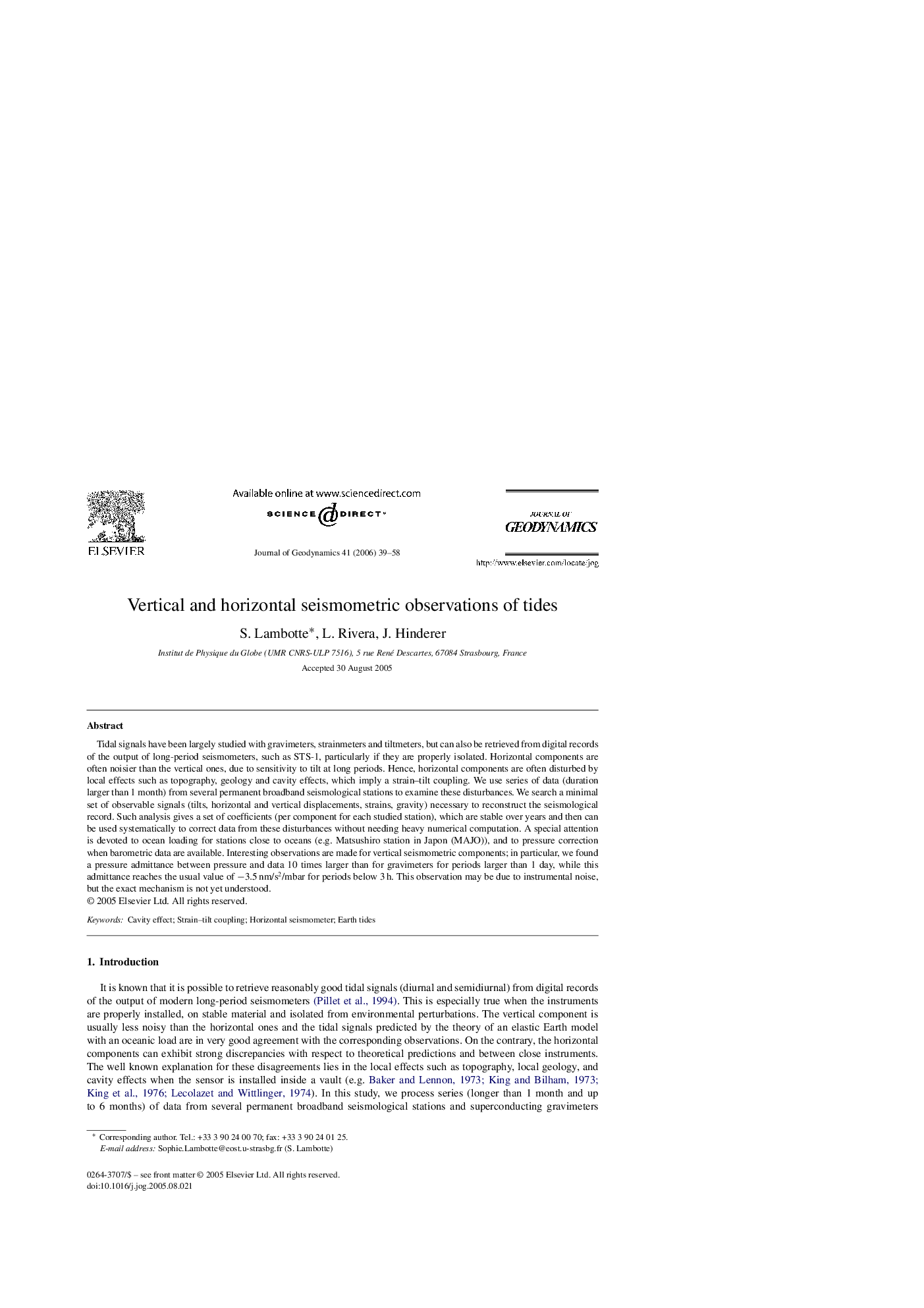| Article ID | Journal | Published Year | Pages | File Type |
|---|---|---|---|---|
| 4688847 | Journal of Geodynamics | 2006 | 20 Pages |
Tidal signals have been largely studied with gravimeters, strainmeters and tiltmeters, but can also be retrieved from digital records of the output of long-period seismometers, such as STS-1, particularly if they are properly isolated. Horizontal components are often noisier than the vertical ones, due to sensitivity to tilt at long periods. Hence, horizontal components are often disturbed by local effects such as topography, geology and cavity effects, which imply a strain–tilt coupling. We use series of data (duration larger than 1 month) from several permanent broadband seismological stations to examine these disturbances. We search a minimal set of observable signals (tilts, horizontal and vertical displacements, strains, gravity) necessary to reconstruct the seismological record. Such analysis gives a set of coefficients (per component for each studied station), which are stable over years and then can be used systematically to correct data from these disturbances without needing heavy numerical computation. A special attention is devoted to ocean loading for stations close to oceans (e.g. Matsushiro station in Japon (MAJO)), and to pressure correction when barometric data are available. Interesting observations are made for vertical seismometric components; in particular, we found a pressure admittance between pressure and data 10 times larger than for gravimeters for periods larger than 1 day, while this admittance reaches the usual value of −3.5−3.5 nm/s2/mbar for periods below 3 h. This observation may be due to instrumental noise, but the exact mechanism is not yet understood.
